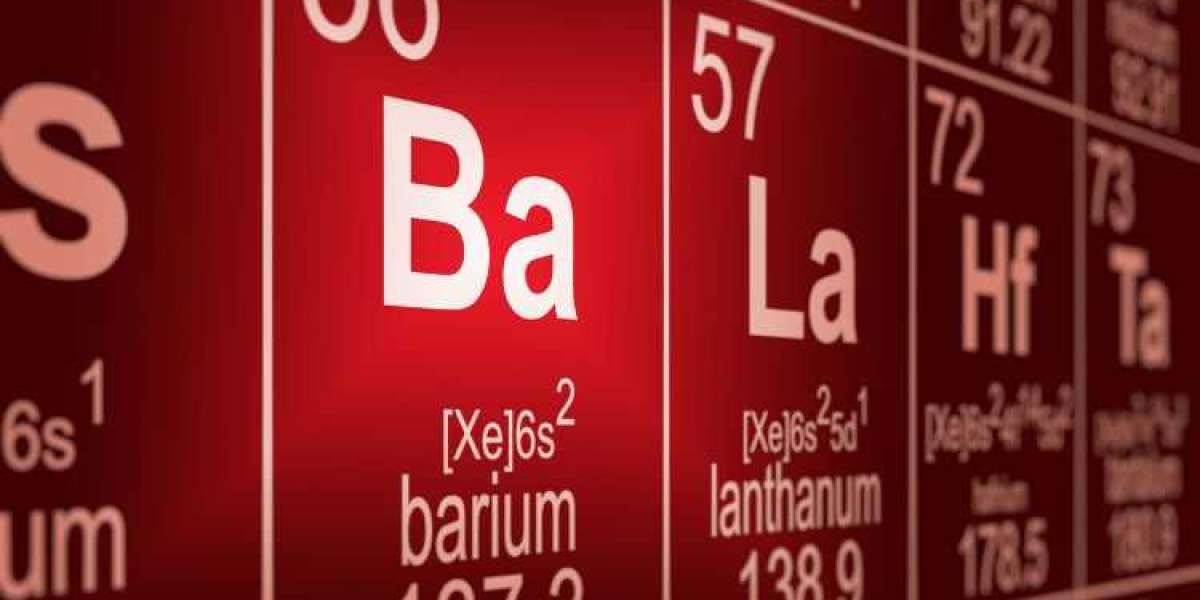Barium titanate (BaTiO3) is a versatile ceramic compound with unique electrical properties that make it indispensable in various applications, particularly in electronics and electric vehicles (EVs). As the global market continues to grow, driven by the rise of electric vehicles and the need for advanced capacitors and sensors, the demand for barium titanate has surged. In this article, we’ll explore the key benefits, industry developments, market segmentation, driving factors, restraining factors, and much more. The global Barium Titanate Market is projected to grow at a compound annual growth rate (CAGR) of 6% between 2024 and 2032, showcasing its potential as a critical component in the evolving technology landscape.
Key Benefits of Barium Titanate
Barium titanate offers several critical advantages, making it an essential material in electronics and other sectors:
High Dielectric Constant: Barium titanate’s high dielectric constant makes it a vital component in capacitors, which are used extensively in various electronic devices such as smartphones, computers, and electric vehicles.
Ferroelectric Properties: Its ability to retain electric polarization under external electric fields makes it suitable for use in memory storage devices, actuators, and transducers.
Thermal Stability: Barium titanate remains stable over a wide range of temperatures, making it ideal for components that must endure harsh conditions.
Non-Toxicity and Environmentally Friendly: Unlike many industrial chemicals, barium titanate is non-toxic, offering an eco-friendly option in sectors like consumer electronics and electric vehicles.
Key Industry Developments
Recent developments in the barium titanate market reflect its growing importance across industries, particularly in the electric vehicle and consumer electronics markets.
Advances in Capacitor Technology: As electronic devices become more compact and efficient, the development of high-performance capacitors using barium titanate has been a major focus for manufacturers. Companies are innovating to produce multi-layer ceramic capacitors (MLCCs), which provide higher capacity in smaller packages.
Integration in Electric Vehicles (EVs): With the global shift towards greener transportation, barium titanate’s role in the EV sector is expanding. It is used in high-voltage capacitors, essential for the energy storage and distribution systems in EVs.
Research and Development in Energy Harvesting: Barium titanate is being investigated for its potential in energy-harvesting devices due to its piezoelectric properties. Such devices can convert mechanical energy into electrical energy, which could lead to new applications in wearable electronics and IoT devices.
Driving Factors
Several factors are contributing to the growth of the global barium titanate market, with a significant emphasis on its role in next-generation technologies.
Rising Demand for Electric Vehicles (EVs): The global transition towards electric mobility is driving the demand for barium titanate, as it plays a crucial role in capacitors used in EVs. The need for efficient energy storage and management in these vehicles will continue to propel the market forward.
Growth in Consumer Electronics: The ever-increasing demand for smartphones, laptops, and other consumer electronics, all of which require capacitors and components using barium titanate, is a key growth driver.
Emerging IoT Devices: As the Internet of Things (IoT) continues to grow, the need for high-performance, miniaturized electronic components is rising. Barium titanate’s properties make it suitable for capacitors and sensors used in IoT devices.
Focus on Renewable Energy Systems: With increasing investment in renewable energy systems such as solar and wind power, barium titanate is being used in components that improve energy storage and conversion efficiency, supporting the push for cleaner energy solutions.
COVID-19 Impact
The COVID-19 pandemic had a notable impact on the barium titanate market, primarily due to disruptions in global supply chains and a temporary slowdown in production across key industries. However, the market experienced a swift recovery due to:
Increased Demand for Consumer Electronics: As remote work and learning became the norm, the demand for electronics surged, boosting the need for barium titanate-based components.
Resilience in Electric Vehicle Development: While there were temporary setbacks in the automotive industry, the long-term growth trajectory of the EV market remained intact, ensuring sustained demand for barium titanate.
Restraining Factors
Despite its numerous advantages, the barium titanate market faces several challenges that could hamper growth in the coming years:
High Manufacturing Costs: The production of high-quality barium titanate involves complex processes, leading to higher costs, which may limit its adoption in cost-sensitive industries.
Raw Material Availability: Fluctuations in the availability and price of raw materials used in the production of barium titanate can impact the market, especially given its dependence on specific high-purity compounds.
Substitute Materials: Alternative materials like strontium titanate are also being explored, which could pose competition to barium titanate, especially in specific applications.
Market Segmentation
The global barium titanate market can be segmented based on application, end-use industry, and region.
By Application:
- Capacitors: Barium titanate is widely used in capacitors, especially multi-layer ceramic capacitors (MLCCs), which are critical components in various electronic devices.
- Sensors: Its ferroelectric properties make it ideal for use in sensors, particularly in automotive and industrial applications.
- Actuators and Transducers: These devices leverage the material’s piezoelectric properties for precise control and energy conversion.
- Others: Barium titanate is also used in other applications such as coatings, electro-optic devices, and photonic devices.
By End-Use Industry:
- Consumer Electronics
- Automotive (Electric Vehicles)
- Telecommunications
- Energy and Power
- Healthcare
Market Outlook
The global barium titanate market is expected to grow at a CAGR of 6% from 2024 to 2032, driven by increasing demand in the electric vehicle and consumer electronics sectors. Technological advancements in capacitor and sensor technologies will also boost the market, along with new research in energy harvesting applications.
Market Overview
Barium titanate is a crucial material in modern electronics and energy storage technologies. Its role in capacitors, sensors, and actuators makes it indispensable in industries ranging from consumer electronics to automotive. The rising popularity of electric vehicles is expected to further drive demand for high-performance capacitors, where barium titanate plays a critical role.
Trends in the Barium Titanate Market
Miniaturization of Electronic Devices: As electronic devices continue to shrink in size, the demand for compact components like multi-layer ceramic capacitors is increasing, boosting the need for barium titanate.
Energy Efficiency Initiatives: The global focus on reducing energy consumption and improving energy efficiency has led to increased demand for barium titanate in renewable energy systems and smart grids.
Focus on Sustainability: Companies are exploring ways to produce barium titanate more sustainably, reducing environmental impact and improving resource efficiency in manufacturing processes.
Industry Segmentation
The barium titanate market can be segmented across several industries:
- Consumer Electronics
- Automotive
- Industrial Equipment
- Energy and Power
- Healthcare
Regional Analysis/Insights
The barium titanate market is geographically diverse, with key markets in North America, Europe, Asia-Pacific, and Latin America.
Asia-Pacific: Dominates the market, driven by the large consumer electronics manufacturing base in countries like China, South Korea, and Japan, as well as the growing adoption of electric vehicles.
North America and Europe: These regions are experiencing growth due to the increasing demand for electric vehicles and advancements in renewable energy technologies.
Latin America and Middle East: These regions are expected to show moderate growth as industrialization and infrastructure development gain momentum.
Major Key Players
- KCM Corporation
- Ferro Corporation
- Fuji Titanium Industry Co., Ltd.
- Nippon Chemical Industrial CO., LTD.
- Shandong Sinocera Functional Material Co., Ltd
- Others
Opportunities
Electric Vehicles: The growing EV market offers significant opportunities for barium titanate, as its applications in energy storage and distribution systems expand.
Renewable Energy Systems: Barium titanate’s role in energy-efficient systems offers opportunities for growth, particularly in energy harvesting devices and capacitors.
Challenges
High Production Costs: Reducing the cost of producing high-quality barium titanate remains a key challenge for manufacturers.
Raw Material Supply: Fluctuations in the supply of raw materials can impact production, creating uncertainty in the market.



